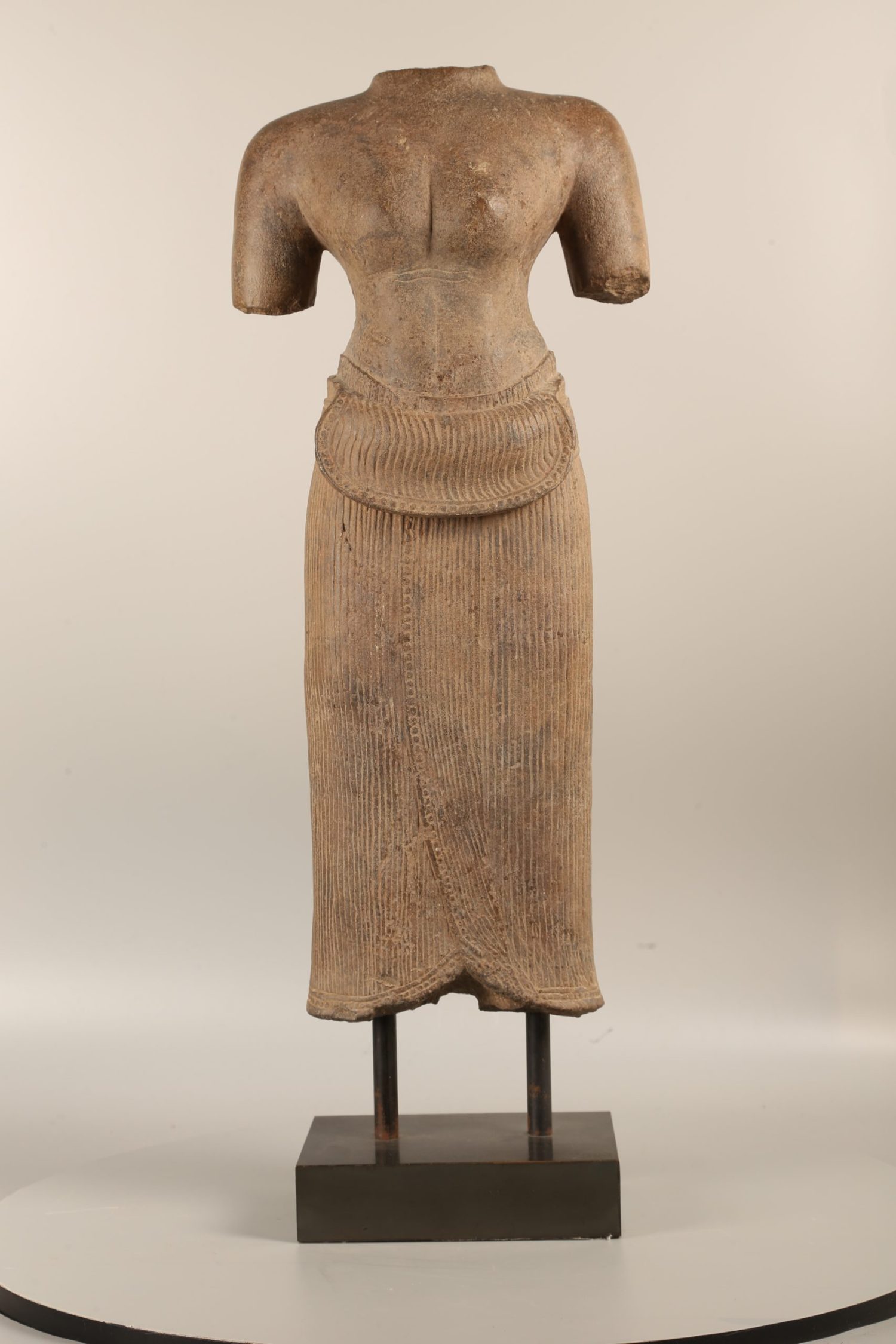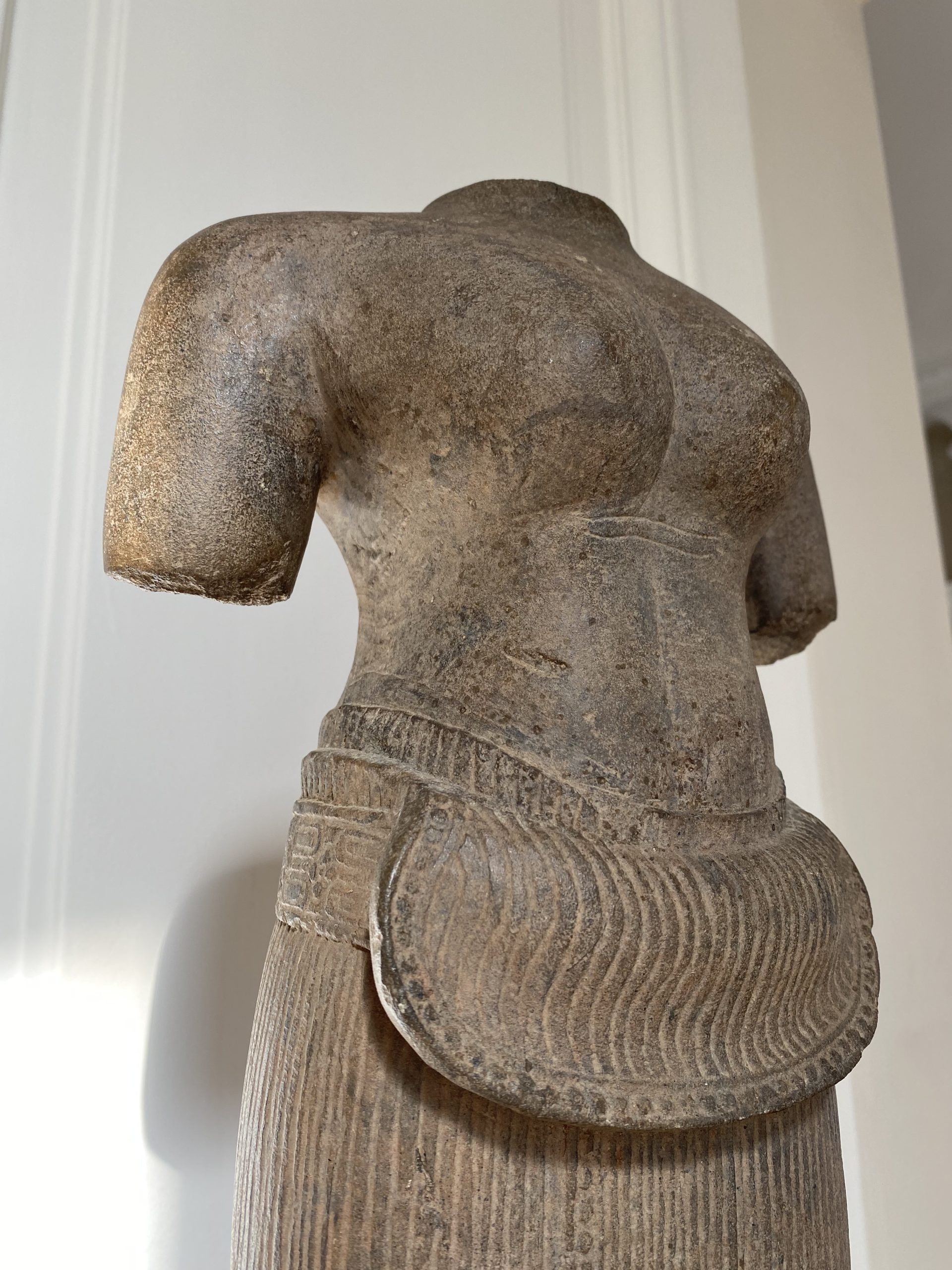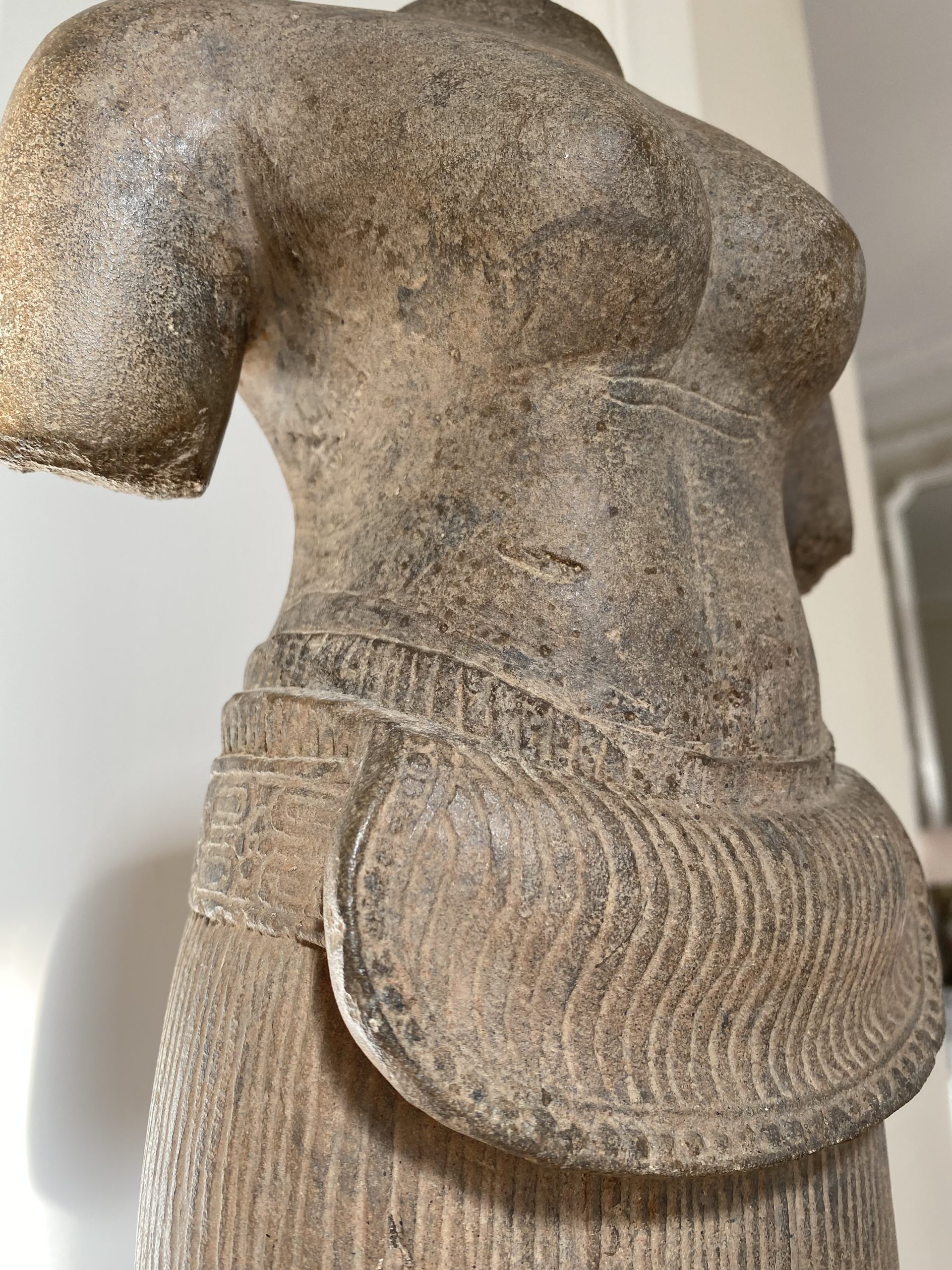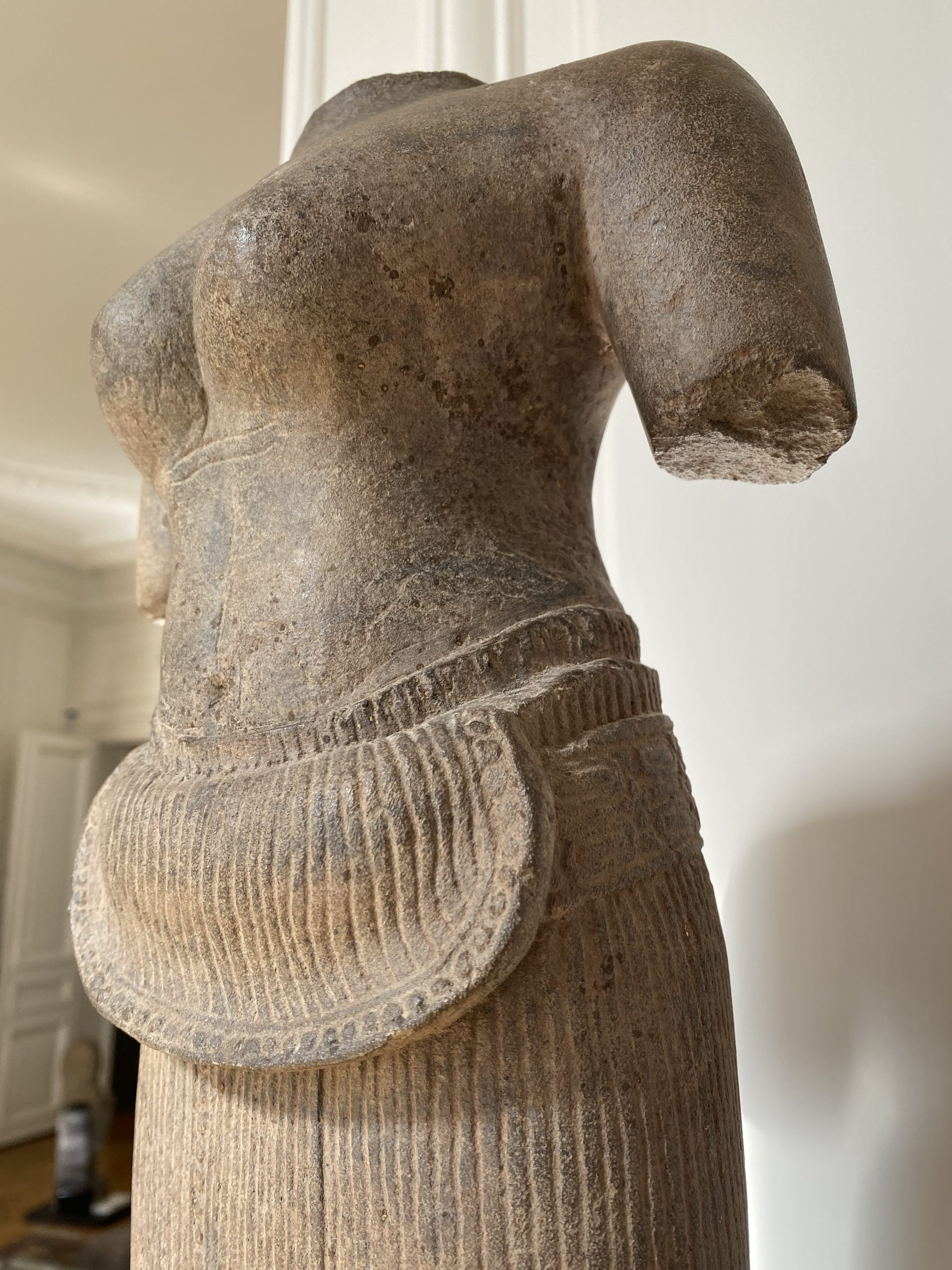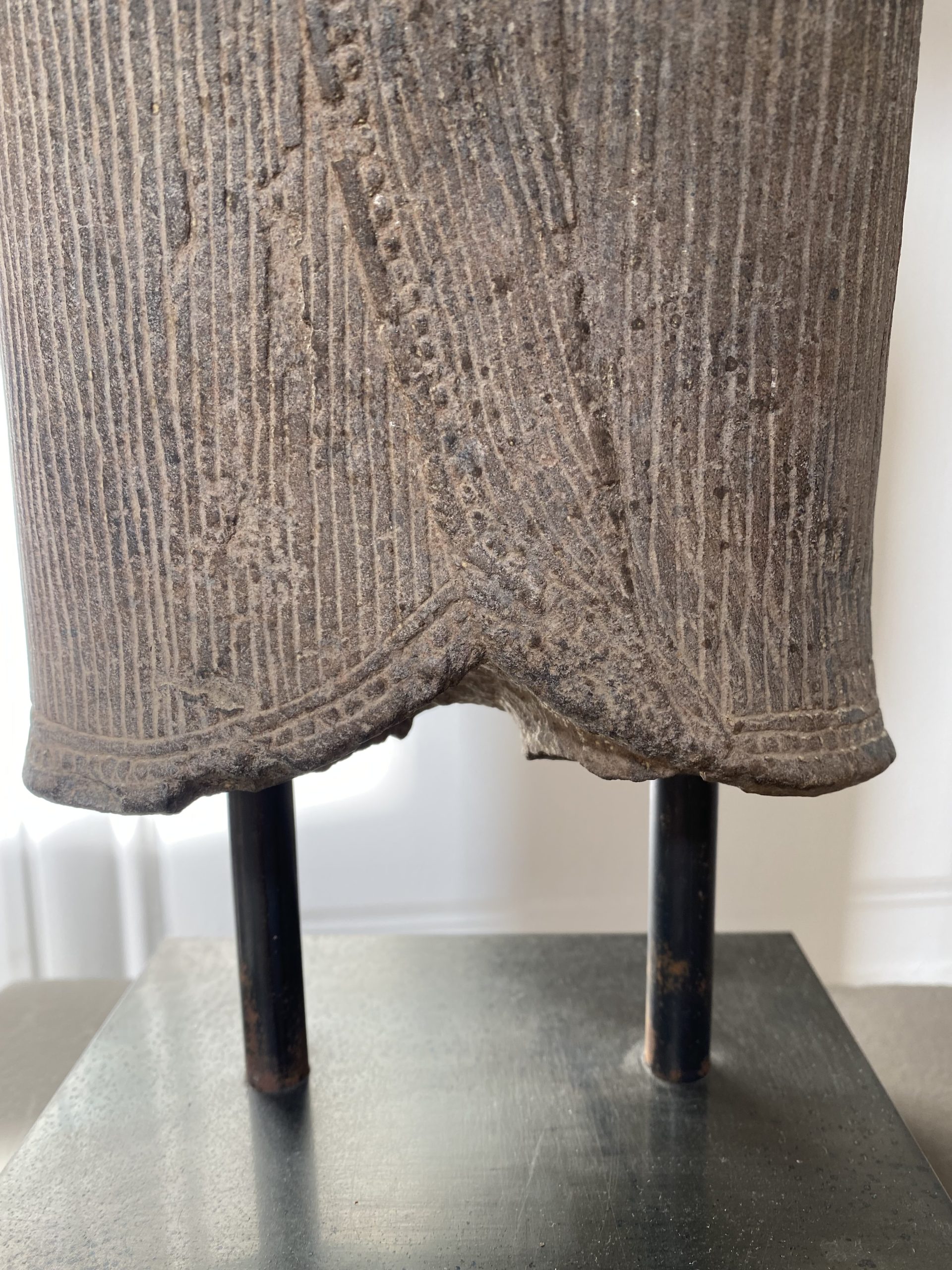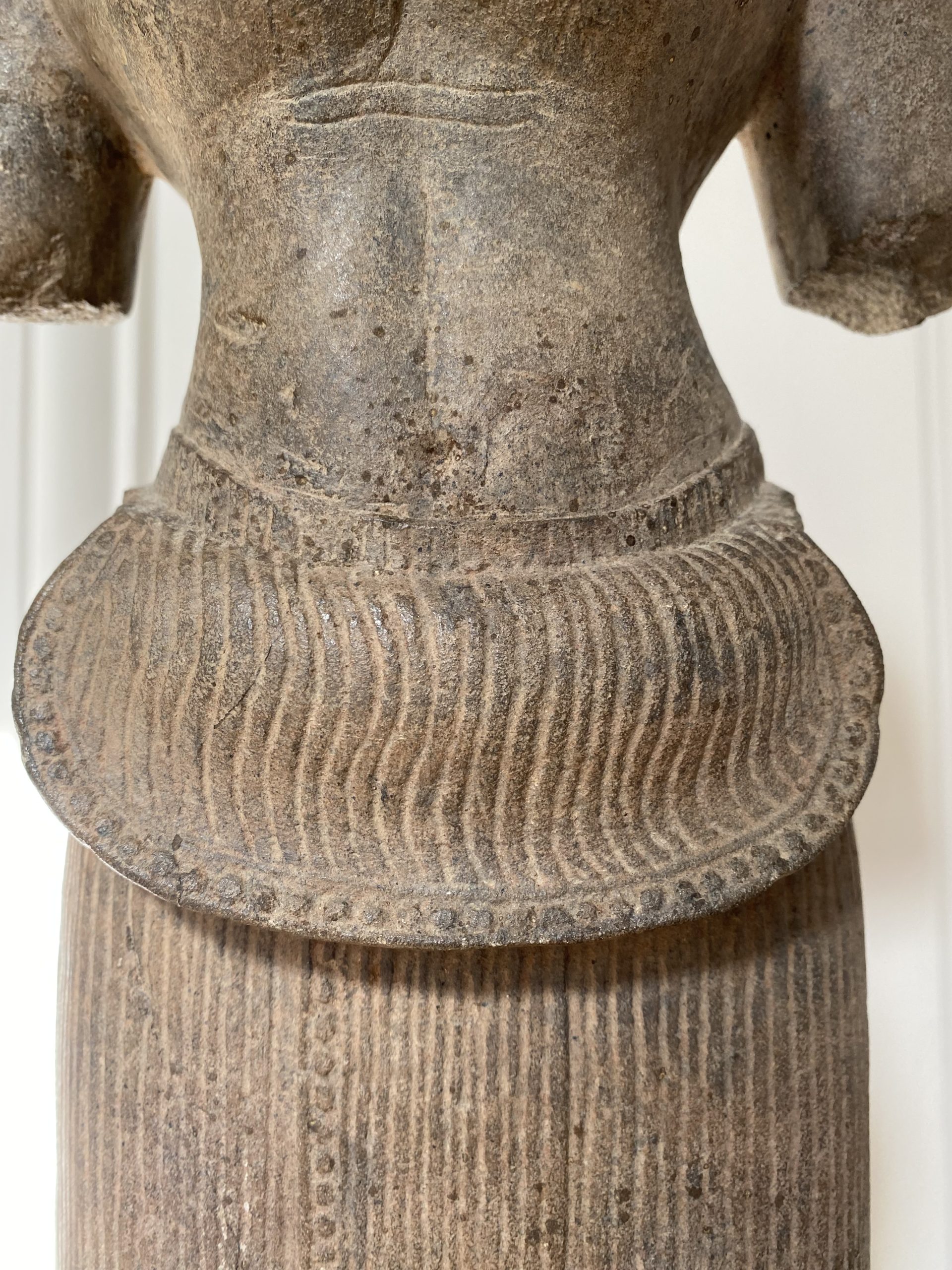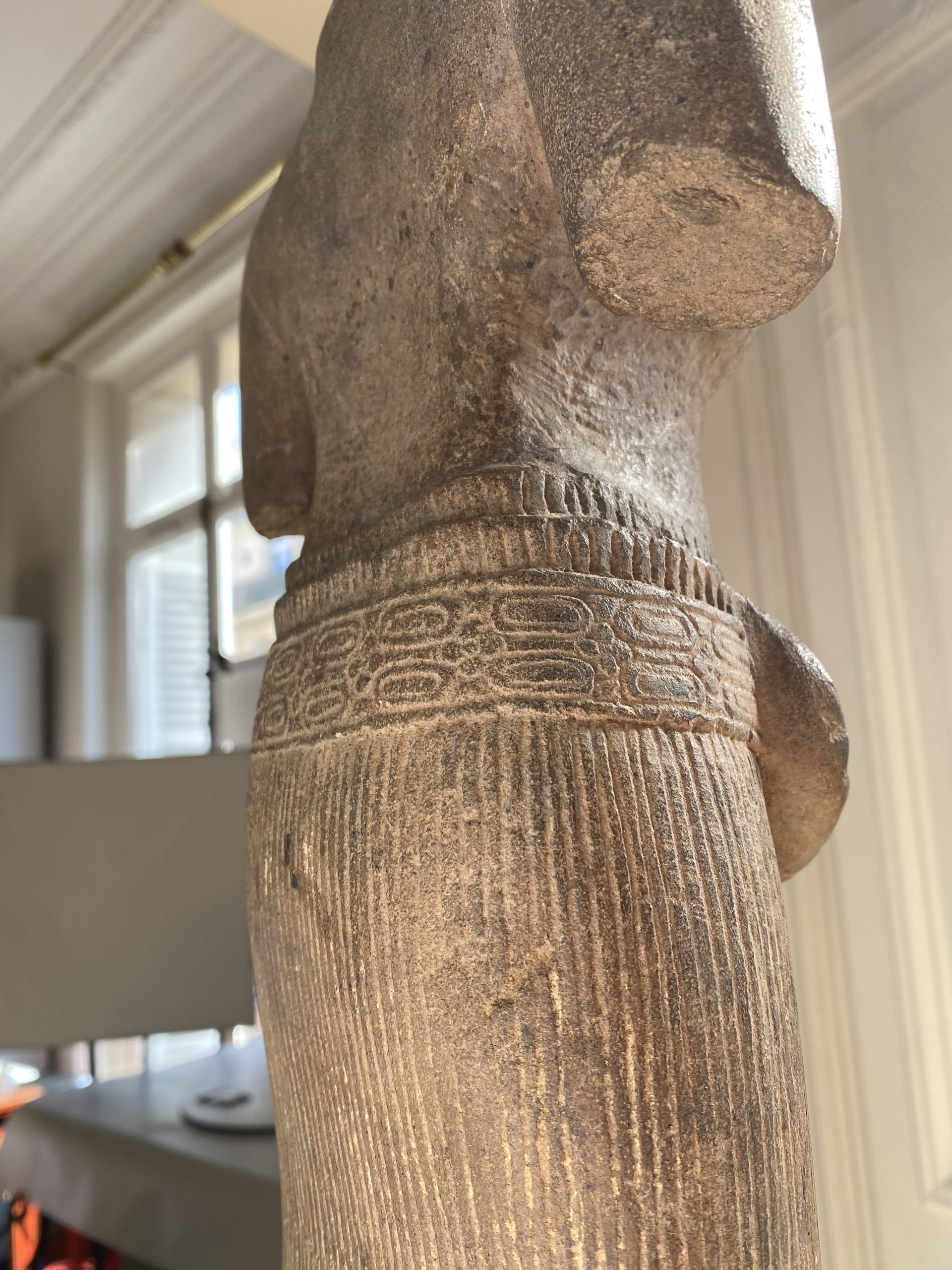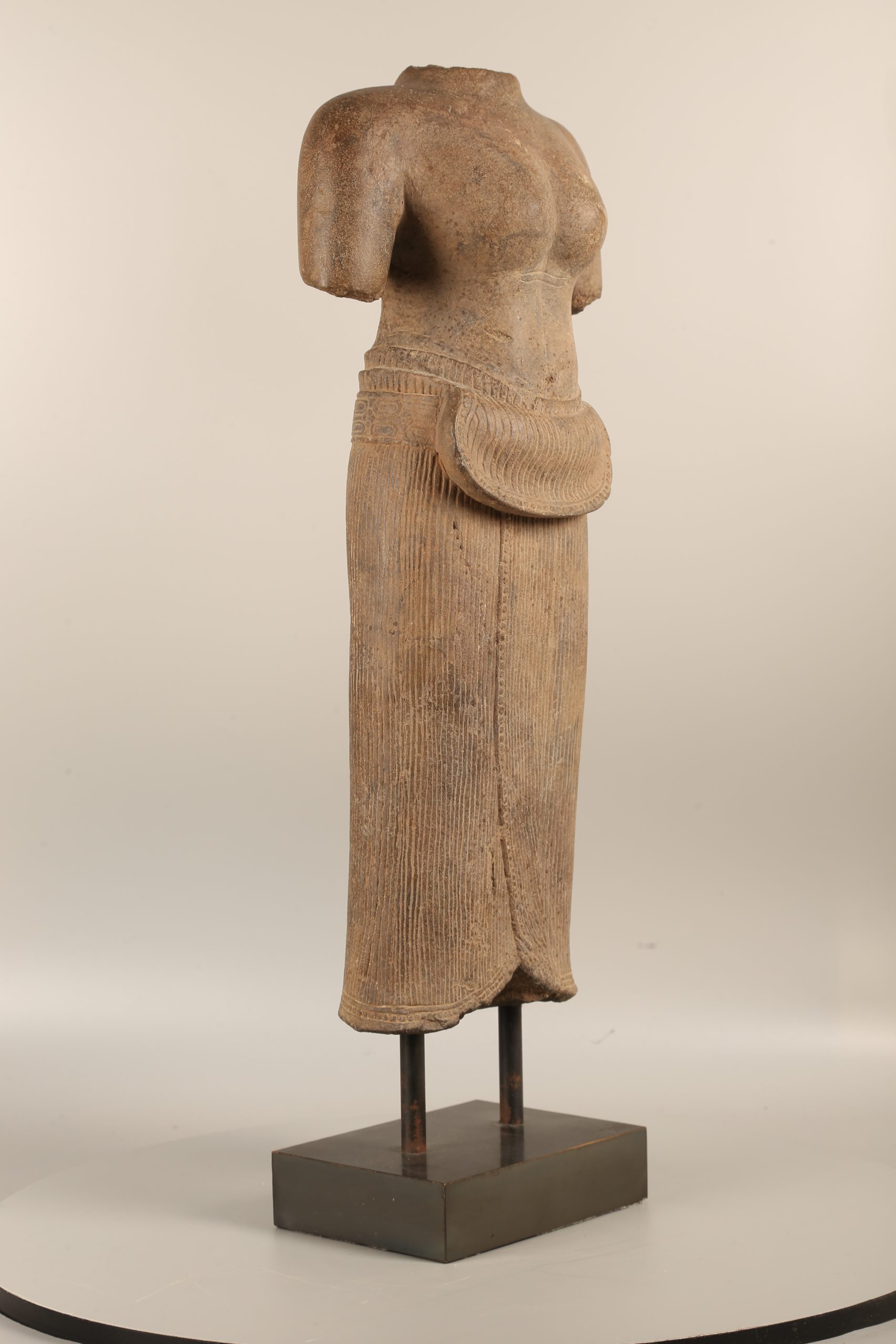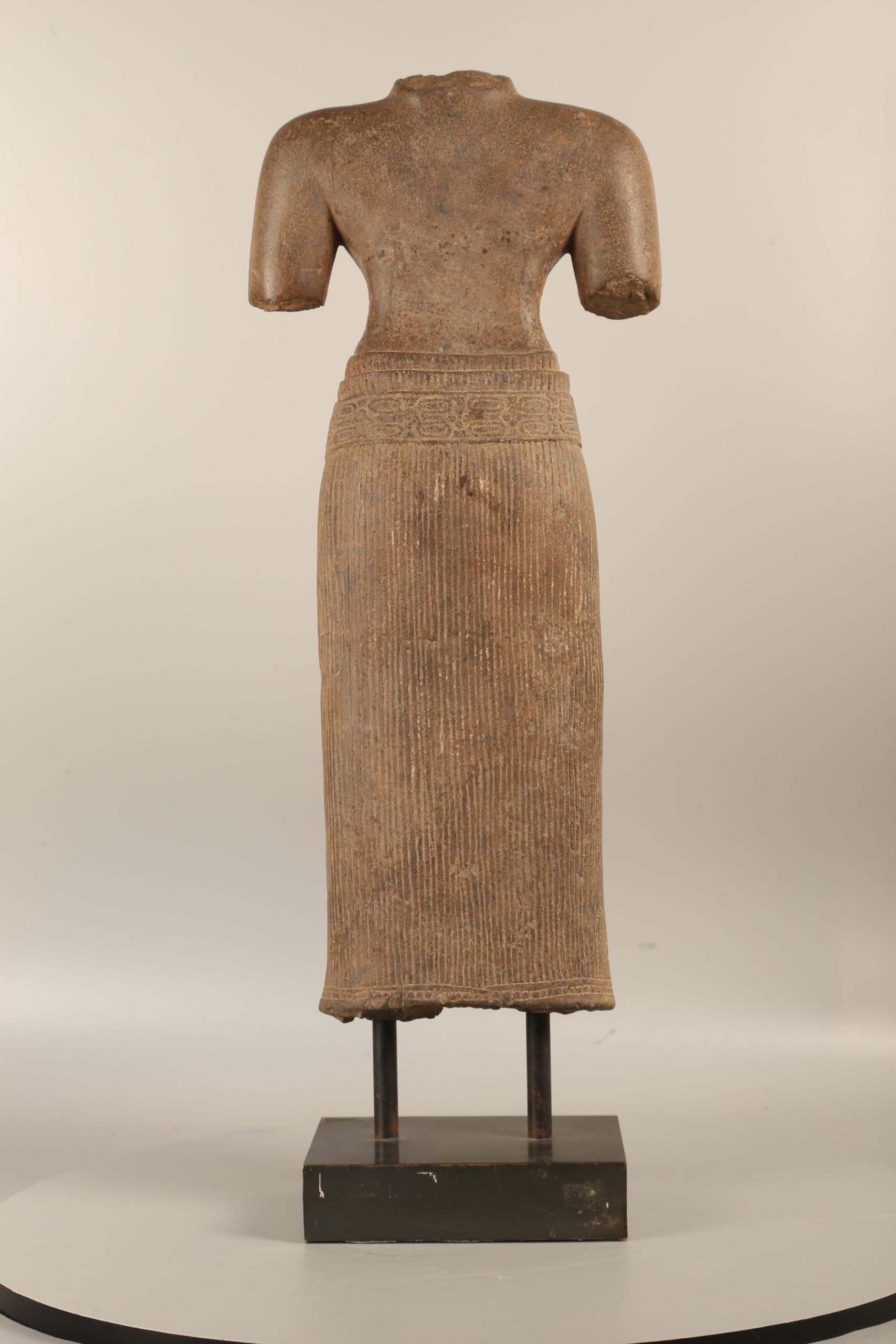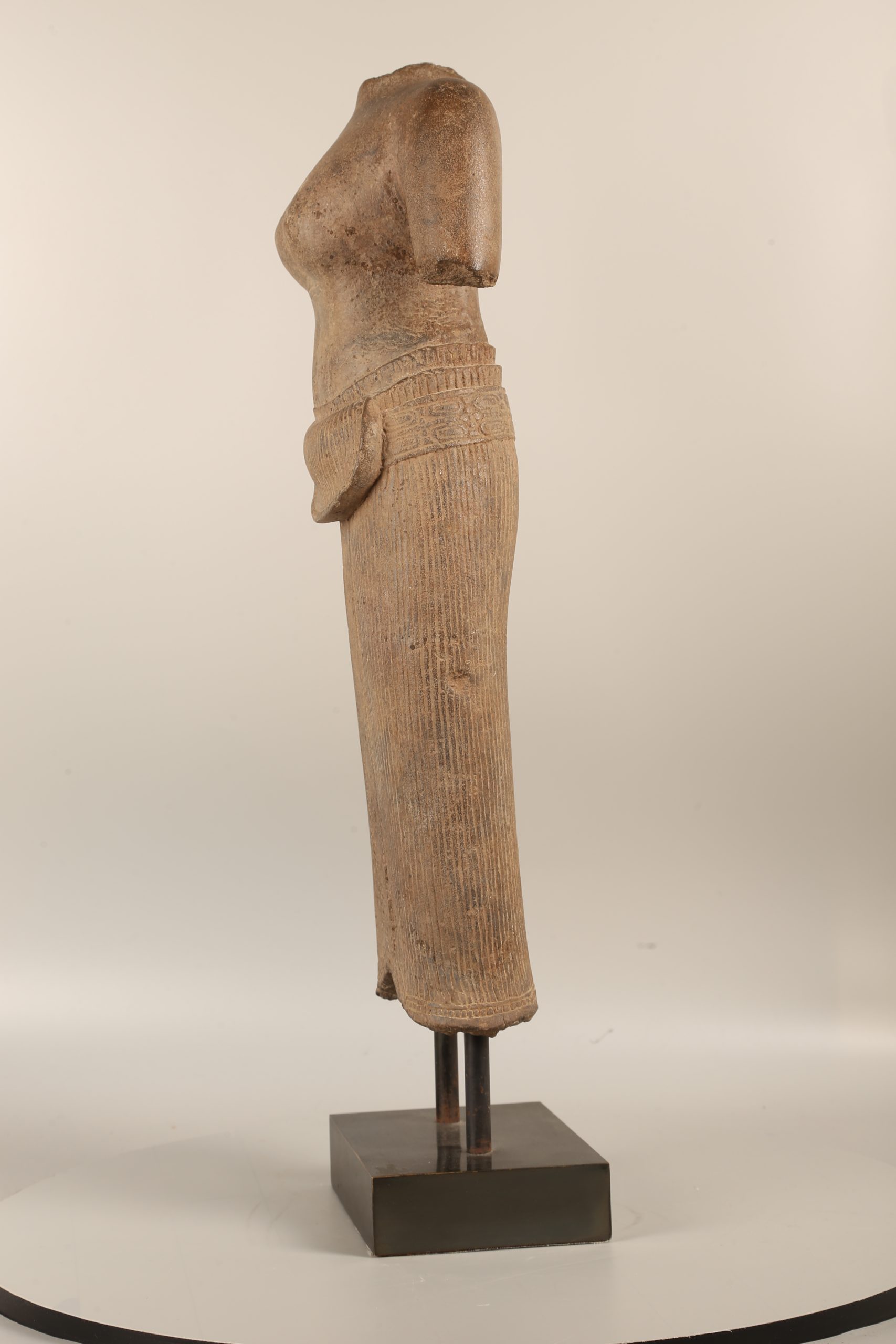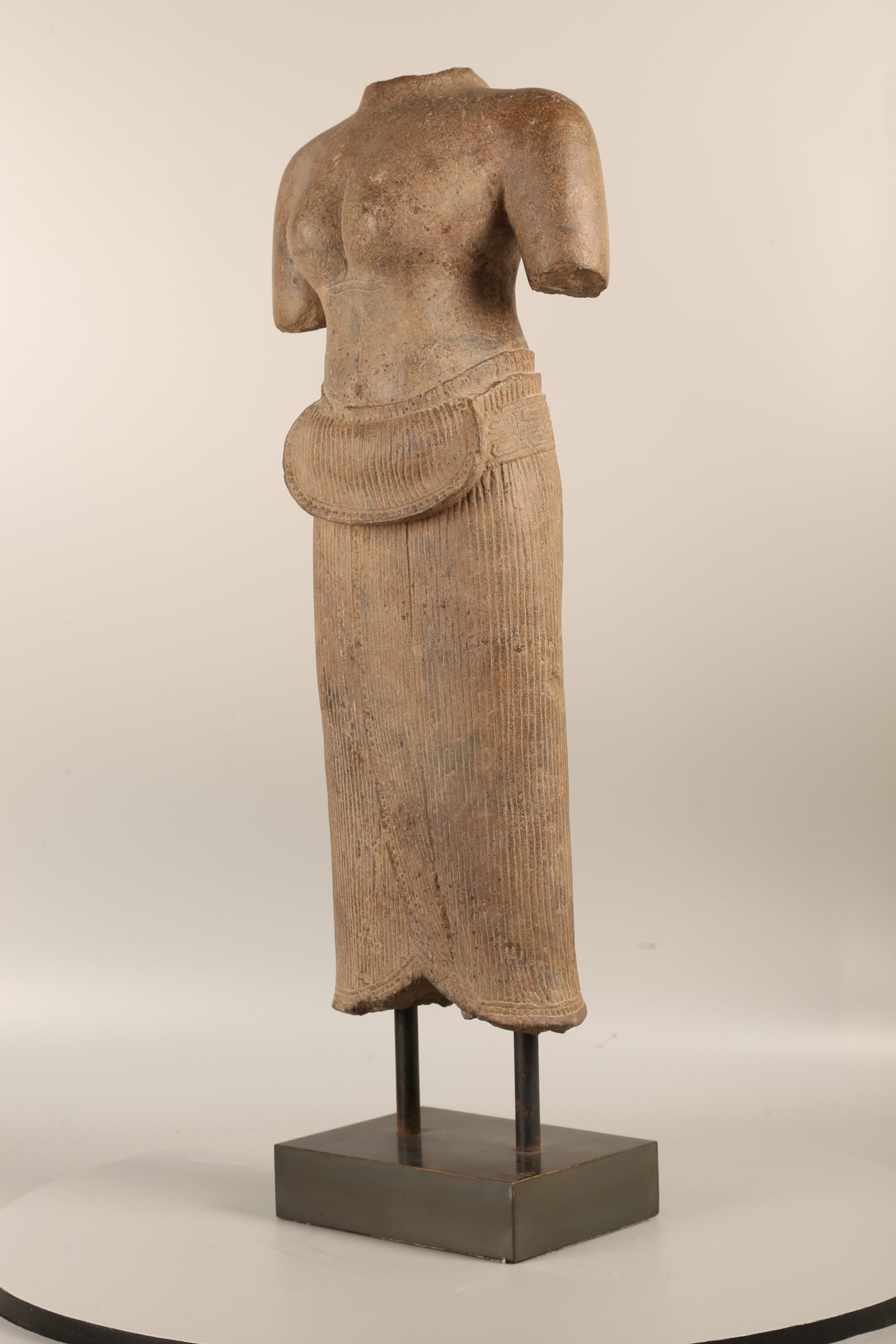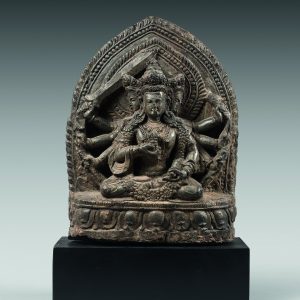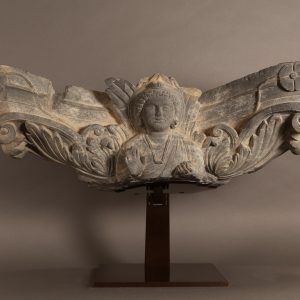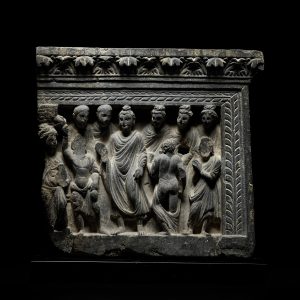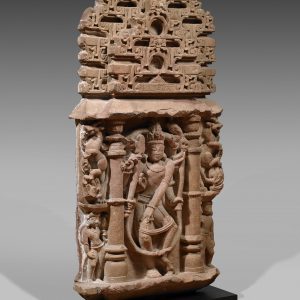Bust of a female deity
Sandstone
Cambodia
10th – 12th century
H. 50 cm or 19,6 inch
360° view
Description
The female ideal in the Angkorian period
This statue from the Angkorian period represents a female deity, who could be identified as the goddess Uma.
This sculpture, which is offered to the eye in a frontal position, is in keeping with the traditional codes of Khmer art. Depicted bare-chested, wearing a dhoti covering her legs, the goddess embodies the canon of the Angkorian period, whose hieraticism and rigour are original. A particular aesthetic, underlined by the very geometric drape of the garment, which is made up of subtly incised folds.
Khmer art, singular from its inception, has preserved over the centuries the iconographic codes and modes of representation established at the beginning. Originally, the sculptures were polychrome. They were adorned with clothing and jewellery in a cultic situation.
Among the original features of Khmer art that we can find on this sculpture are the incisions under the chest of the goddess, which are systematic but whose form has evolved over the centuries. This detail also highlights the volumes of the slender figure of the goddess. In the same way, the pocket of the dhoti – folded under the belly – is a fundamental element of Khmer representations.
Like this sculpture, all Khmer works are carved from sandstone, a stone that is abundant in the country. This material allows sculptors to play with the modelling of the flesh and the polishing, and its great density allows for the refinement of details.
The apogee of Khmer art
This work is part of the Angkorian period (802-1431), which is considered the apogee of Khmer art. This period began under the reign of Jayavarman II, who established his capital at Angkor, in the central plain of the country. Located next to the Great Lake, the site benefits from numerous natural resources, notably favoured by the phenomenon of the inversion of the Mekong River, which drains the entire territory. During this long period, the nerve centre of the capital gradually shifted, and many temples were built, creating an unparalleled artistic emulation.
Under Thai pressure, the capital of Angkor was abandoned in 1431, thus putting an end to an era considered as the most brilliant artistic period in Cambodia.
The Visnuite cult in Cambodia
Influenced by India, the Khmers adopted not only their main religions – Buddhism and Hinduism – but also other cultural aspects, notably the Sanskrit script. The Khmer rulers were Hindu until the 16th century, when they built many temples on the site of Angkor, before making Mahayana Buddhism the state religion.
This sculpture can be identified as the goddess Uma, also known as Parvati. Parvati is one of the main goddesses of Hinduism and is of particular importance in the Sivaite cult, which spread throughout Cambodia during the medieval period.
The sensuality of the goddess’s forms is noted here, and her hieraticism appears less severe than in earlier periods.
Provenance : French private collection, during 1980’s and 1990’s.

